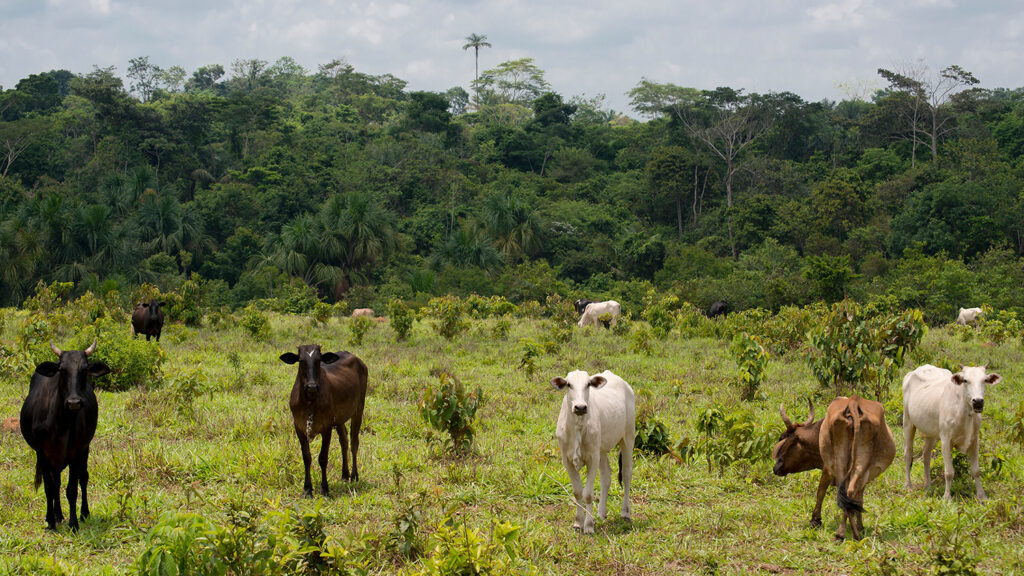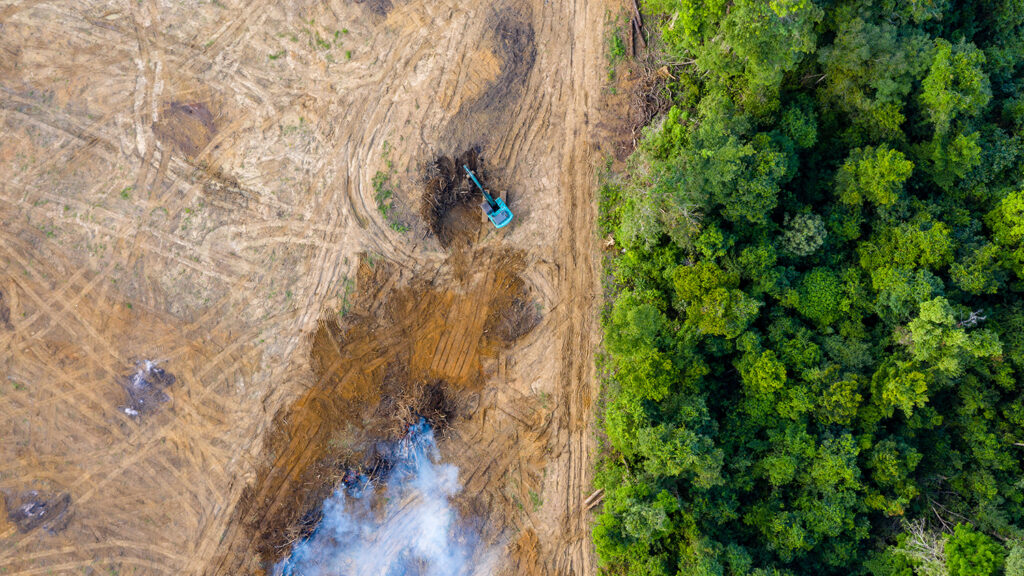As greenhouse gas emissions continue to drive global warming, the public and private sectors are increasingly investing in carbon offsets.
Carbon offsets allow businesses and governments to cancel out their own emissions by supporting projects that remove or reduce emissions of an equal amount of greenhouse gases.
Many projects focus on promoting forest conservation. Forests play a vital role in mitigating climate change because they capture and store greenhouse gases.
Unfortunately, the world has lost about a billion acres of forest since the 1990s due to farming, livestock grazing, mining, drilling, urbanization and more.
Countries adopted the Reducing Emissions from Deforestation and Forest Degradation (REDD+) framework as part of the Paris Agreement to incentivize forest conservation.
The Paris Agreement’s primary objective is to limit global warming to “well below” 3.6°F above pre-industrial levels, and to also pursue efforts to limit warming to 2.7°F.
More than 140 countries, including the United States, have agreed to reduce greenhouse gas emissions to as close to zero as possible. The U.S. has set a goal of net-zero emissions by no later than 2050.

As countries work to reduce their emissions according to national targets they’ve set for themselves under the Paris Agreement, they can use REDD+ to do that.
The REDD+ framework also allows greenhouse gas emitters to pay for reducing deforestation and degradation, primarily in tropical landscapes in the Global South, as a way to reduce emissions.
The emitters — whether companies or governments — typically exchange their payments for “carbon offsets,” which act as either permits or moral license for them to continue emitting the equivalent amount of greenhouse gases.
While reducing emissions through carbon offsets is important to reaching global net zero goals, the effectiveness of the REDD+ framework remains in question.
Erin Sills, the Edwin F. Conger Professor of forest economics at NC State, along with other researchers, studied REDD+ projects that generate carbon offsets for the voluntary market and found that many projects overestimate their impact.
One study conducted by Sills and collaborators shows that only 6% of the total carbon offsets produced by 18 REDD+ projects across five tropical countries are valid.
We recently spoke with Sills to learn more about the challenges impacting REDD+ projects around the world. Learn more below.
Climate Change, Markets and Policies

The success of a REDD+ project ultimately relies on its ability to conserve forests — a difficult task in today’s world. “Forest conservation is challenging because there are external factors that can’t be easily controlled,” Sills said.
One of those factors includes climate change, which is increasing the frequency, intensity and duration of wildfires and tropical storms. Both of these effects can negatively impact trees that are part of carbon offset projects.
When the trees within a carbon offset project are burned or knocked down, for example, they release their stored carbon back into the atmosphere. Those emissions should be deducted from the project’s benefits. “All of that carbon goes up in smoke,” Sills said.
In 2021, for example, the Bootleg Fire consumed approximately 414,000 acres across southern Oregon. About 100,000 of those acres belonged to a carbon offset project containing some 3.3 million metric tons of carbon.
But climate change isn’t the only external factor capable of negatively impacting REDD+ and other forest carbon offset projects, according to Sills. Market forces and government policies can also play a role.
“It’s difficult to conserve a forest if the price of palm oil skyrockets and the alternative use of that forest is oil palm, or if you elect a new government that doesn’t prioritize forest conservation,” she said.
Leakage

Aside from climate change and other external factors, leakage can also impact REDD+ and other forest carbon offset projects. This phenomenon occurs when projects cause greenhouse gas emissions to shift from one location to another.
Direct leakage occurs when individuals or businesses within project areas relocate their activities to different areas, leading to more deforestation in those areas. Such activities often include agriculture, cattle farming and logging.
“If you set up a project in a forest that was going to be converted to crop fields and local communities still need crops to eat, they’re going to have to plant somewhere else. So direct leakage is the extent to which these types of activities shift,” Sills said.
Market leakage, on the other hand, occurs when the implementation of a carbon offset project reduces the supply of certain goods and services, leading to higher prices that make it more profitable to deforest other areas for crop or livestock production.
This type of leakage can occur in other sectors as well, according to Sills. For example, if a country or business closes an oil well to reduce their carbon footprint, it can cause the global petroleum supply to decrease.
When supply decreases but demand remains the same, the price of petroleum is likely to increase. This can cause competing businesses to open new oil wells to meet demand, resulting in more greenhouse gas emissions.
“We have to grow food somewhere and produce energy somehow so leakage is going to be inevitable, unless and until we improve agricultural productivity or invest in renewable energy technologies,” Sills said.
Credible Baselines

Carbon credits from REDD+ are certified and tracked by nonprofit organizations such as Verra based on the performance of a project, or more specifically, “additionality” — the amount of deforestation prevented by a project.
Put simply, project developers establish a baseline scenario by estimating the amount of deforestation that would have occurred without the project. That baseline typically assumes the continuation of historic deforestation trends.
The project developer then compares that baseline with the amount of observed deforestation in a project area to determine how much deforestation was actually prevented so that they can determine how many credits were generated.
But the baseline scenario may not reflect what really would have happened without the project, and project developers are often tempted to forecast larger percentages of deforestation so that their project can claim credit for greater reductions in deforestation.
Project developers may select specific sites where the potential for deforestation is low, even though the surrounding region is undergoing rapid deforestation, so that they can maximize their carbon credits, for example. This strategy helps developers meet their performance targets, but it does not really avoid more emissions
“It makes it easy for project developers to prevent deforestation when their sites aren’t in danger of being deforested in the first place,” Sill said. “And while they’re ‘protecting’ these sites, other more vulnerable areas of forest are being cut down.”
REDD+ developers also often fail to provide consistent, open-access information about their projects in a standardized format so that third parties such as Sills and other researchers can verify the additionality of projects.
Sills pointed to her recent study of REDD+ projects across Peru, Colombia, Cambodia, Tanzania and the Democratic Republic of the Congo as an example of this problem. While she and other researchers investigated a total of 26 projects, only 18 of those provided sufficient information on their assumptions about “baseline” deforestation and emissions for the complete analysis.
“The projects and companies highlighted in our studies are the ones who have done the best job providing the necessary information,” Sills said. “This is a learning process and the companies that are providing full information are making themselves more vulnerable to criticism. But they’re helping us learn.”
Verra recently announced that it will now lead the process through which baselines for REDD+ projects are established, implementing country-level baselines produced by groups that utilize satellite remote sensing data to quantify forest biomass.
“It’s a clear example of the sector responding to science so that they can do better for the climate,” Sills concluded.
This post was originally published in College of Natural Resources News.